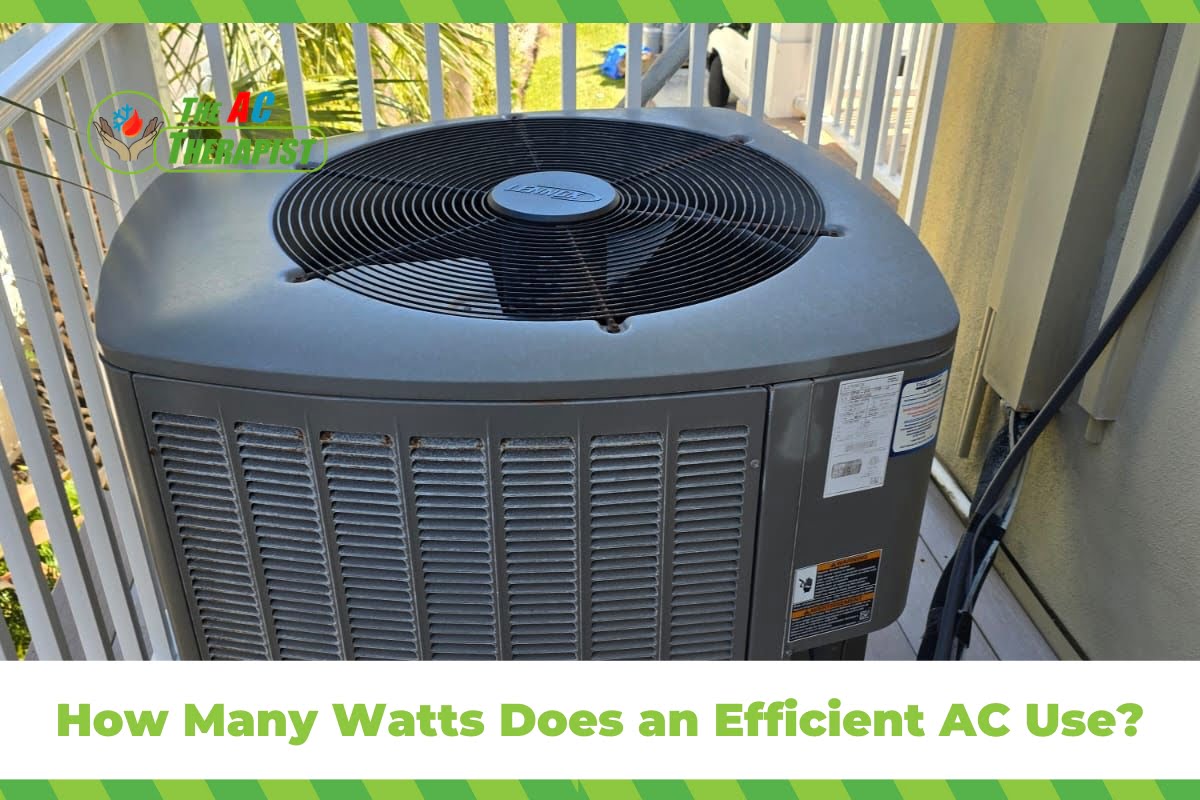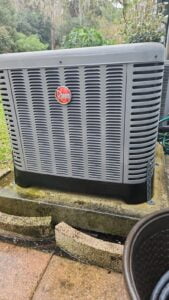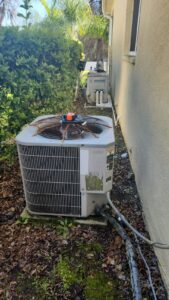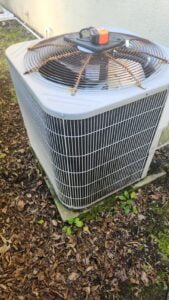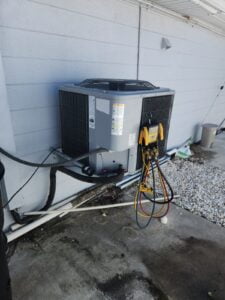How Many Watts Does an Efficient AC Use?
As global temperatures rise and the quest for comfort becomes ever more prevalent, air conditioning units have transitioned from luxury to necessity in many regions around the world. However, this increased reliance on air conditioning brings with it a significant challenge: energy consumption. The importance of energy efficiency in air conditioning cannot be overstated, as it plays a pivotal role in not only managing our comfort but also in addressing broader environmental concerns and economic implications.
Energy efficiency in air conditioning refers to the ability of a system to provide cooling with minimal electric power consumption. This aspect is crucial for several reasons. Firstly, air conditioners are among the most power-intensive appliances within a household, contributing significantly to electricity bills, especially during the warmer months. An efficient air conditioner can drastically reduce these costs by utilizing less power to achieve the same cooling effect, thereby offering relief not only from the heat but also from financial burdens associated with high energy usage.
Moreover, the environmental impact of widespread AC use is profound. Air conditioners draw on electricity, which, in many areas, is produced from fossil fuels—a leading source of carbon dioxide emissions contributing to global warming. By optimizing the energy efficiency of air conditioning units, we can significantly lower these emissions, taking a step forward in the fight against climate change. Energy-efficient AC units not only consume less power but also reduce the demand on electricity grids, diminishing the need for energy production from non-renewable sources.
With these considerations in mind, this blog post aims to explore the wattage consumption of efficient air conditioning units. Understanding how many watts an efficient AC uses is essential for making informed decisions about which units to purchase and operate. This knowledge empowers consumers to select air conditioning systems that align with their values, whether they prioritize cost savings, environmental sustainability, or both. By delving into the specifics of AC wattage consumption, we can uncover strategies for enhancing energy efficiency, thereby achieving comfort without compromise.
Understanding AC Wattage
Understanding AC wattage is fundamental to grasping the broader concept of energy efficiency in air conditioning systems. Wattage, measured in watts (W), quantifies the rate at which an air conditioner consumes electrical energy. In simpler terms, it tells us how much electric power an AC unit needs to operate. This measurement is crucial for several reasons, from calculating energy costs to assessing environmental impact and choosing the most efficient systems for our homes and workplaces.
The Basics of Wattage in Air Conditioning
Every air conditioner has a power requirement, expressed in watts, that reflects its energy consumption at any given moment. This figure can vary widely among different types and models of AC units. For instance, a small, portable air conditioner might use around 500 to 1500 watts of power, while a larger, central air conditioning system could require 2000 to 5000 watts or more, depending on its capacity and efficiency.
Factors Affecting AC Wattage Consumption
Several factors influence the wattage consumption of an air conditioner, including:
- Size and Capacity: Generally, the larger the area an AC unit is designed to cool, the higher its wattage consumption. This is because larger spaces require more cooling power, which in turn requires more energy.
- Efficiency: Air conditioners with higher energy efficiency ratings use less wattage to achieve the same cooling effect as less efficient models. Efficiency is often indicated by the Seasonal Energy Efficiency Ratio (SEER) rating in the United States.
- Type of AC: Different types of air conditioners (such as window, split, portable, and central systems) have different power requirements. Typically, central air conditioning systems are more energy-efficient per square foot cooled but may have a higher overall wattage due to the larger areas they cool.
- Settings and Usage: The thermostat setting, frequency of use, and maintenance of the AC unit can also impact its wattage consumption. Lower thermostat settings and prolonged use increase energy consumption, while regular maintenance can help maintain efficiency.
- Age and Condition: Older AC units or those in poor condition may be less efficient and consume more power than newer, well-maintained models.
Why Understanding Wattage is Important
Knowing the wattage consumption of an air conditioner is essential for several practical reasons:
- Cost Estimation: Understanding the wattage allows homeowners and businesses to estimate the cost of operating an air conditioner, helping to budget for energy expenses.
- Environmental Considerations: By choosing air conditioners with lower wattage consumption, individuals can reduce their carbon footprint, contributing to environmental sustainability.
- Informed Purchasing Decisions: Awareness of wattage and efficiency can guide consumers in selecting air conditioning systems that balance cooling needs with energy conservation goals.
Types of Air Conditioners and Their Efficiency
When choosing an air conditioner, understanding the different types available and their respective efficiencies is crucial for making an informed decision that aligns with your cooling needs, budget, and environmental values. Air conditioners come in various forms, each with its own set of characteristics, efficiency levels, and wattage requirements. Here’s an overview of the most common types of air conditioners and how their efficiency can impact wattage consumption.
Window Air Conditioners
Window air conditioners are a popular choice for cooling single rooms. These units are designed to fit into a window frame and are relatively easy to install and remove. Window ACs are available in a wide range of sizes and efficiency levels. In terms of wattage, smaller units can consume as little as 500 watts, while larger models may require up to 1,500 watts or more. The efficiency of window air conditioners is often measured by their Energy Efficiency Ratio (EER) or Seasonal Energy Efficiency Ratio (SEER) ratings, with higher numbers indicating better efficiency.
Split System Air Conditioners
Split system air conditioners consist of two main components: an outdoor unit containing the compressor and condenser, and one or more indoor units that distribute cooled air. These systems are known for their efficiency and are suitable for cooling individual rooms or multiple areas when equipped with multiple indoor units. Split ACs generally have higher SEER ratings compared to window units, indicating better energy efficiency. Their wattage consumption varies significantly based on the system’s size and the number of indoor units, but on average, they tend to be more energy-efficient, translating to lower overall wattage use for the same cooling capacity.
Central Air Conditioning Systems
Central air conditioning systems are designed to cool entire homes or buildings through a network of ducts. They are the most efficient option for large spaces, offering consistent cooling throughout the premises. Central ACs require a significant amount of power, typically ranging from 2,000 to 5,000 watts or more, depending on the system’s size and efficiency. However, because they cool larger areas more uniformly, their efficiency on a per-square-foot basis can be higher than that of window or portable units. The efficiency of central air conditioners is also rated by SEER, with modern, energy-efficient models boasting SEER ratings of 20 or higher.
Portable Air Conditioners
Portable air conditioners are freestanding units that can be moved from room to room. They are versatile and easy to install but generally less efficient than other types of AC units. Portable ACs can consume anywhere from 900 to 1,500 watts, depending on their cooling capacity. While convenient, their EER ratings are typically lower than those of window or split system air conditioners, making them a less energy-efficient option for prolonged use.
Energy Efficiency and Its Impact
The energy efficiency of an air conditioner significantly affects its wattage consumption and, by extension, its operating cost and environmental impact. Energy-efficient air conditioners use advanced technologies, such as variable speed compressors and fan motors, to adjust cooling output precisely to the need, reducing energy waste. These technologies not only lower wattage consumption but also improve comfort by maintaining more consistent temperature levels.
The Role of SEER Ratings in AC Efficiency
The Seasonal Energy Efficiency Ratio (SEER) rating plays a pivotal role in understanding and measuring the efficiency of air conditioning units. As a critical metric, SEER ratings provide consumers and industry professionals with a clear benchmark for comparing the energy efficiency of various air conditioning systems. This rating is particularly important in the context of reducing energy consumption, managing costs, and minimizing environmental impact.
What is SEER?
SEER stands for Seasonal Energy Efficiency Ratio, a measure of air conditioning and heat pump cooling efficiency calculated over a seasonal average. Specifically, SEER is the ratio of the cooling output of an air conditioner over a typical cooling season, divided by the energy it consumes in Watt-Hours. It is calculated using a standardized test over a range of external temperatures ranging from 65°F to 104°F (18°C to 40°C) to simulate a typical cooling season. A higher SEER rating indicates greater efficiency, as it means the unit provides more cooling output per unit of energy consumed.
Importance of SEER Ratings
Energy Savings: The most direct impact of a high SEER rating is energy savings. Air conditioners with higher SEER ratings use less electricity to achieve the same amount of cooling as those with lower ratings. This efficiency can lead to significantly lower electricity bills during the cooling season, especially in regions with hot climates where air conditioners are used extensively.
Environmental Impact: By consuming less energy, high-SEER air conditioners reduce the demand on electricity grids, which often rely on fossil fuels. This decreased energy usage directly correlates with lower carbon dioxide emissions, contributing to reduced greenhouse gas emissions and a smaller carbon footprint for households and businesses.
Comfort and Performance: High-SEER units often incorporate advanced technology that not only improves efficiency but also enhances overall performance. This includes features like variable speed compressors and fans, which allow the air conditioner to adjust cooling output more precisely to the needs of the space, maintaining more consistent temperature and humidity levels.
Long-term Cost Savings: Although air conditioners with high SEER ratings may have a higher initial purchase price, the reduction in energy bills can offset the initial investment over time. This makes them a cost-effective choice in the long run, especially in areas with high cooling demands.
Regulations and Standards
In the United States, the Department of Energy (DOE) sets minimum SEER requirements for air conditioning units to ensure baseline levels of energy efficiency. These standards vary by region, reflecting the different cooling needs of various parts of the country. As of my last update in April 2023, residential central air conditioners must meet a minimum SEER rating of 13 or 14, depending on the region. However, many manufacturers offer units with SEER ratings much higher than the minimum requirement, with some models achieving SEER ratings of up to 20 or more.
Selecting an AC Unit Based on SEER Ratings
When selecting an air conditioning system, considering the SEER rating is crucial for balancing upfront costs with long-term savings and environmental impact. A higher SEER rating indicates a more efficient air conditioner, but the optimal rating for a specific situation depends on various factors, including climate, home size, and usage patterns. It’s important to consult with HVAC professionals to determine the most cost-effective and efficient air conditioning solution for your needs, taking into account both the SEER rating and other factors such as unit size and type.
Reducing Your AC’s Wattage Consumption
Reducing your air conditioner’s (AC’s) wattage consumption is essential for achieving energy efficiency and lowering electricity bills. The amount of watts your AC uses directly impacts your energy costs and environmental footprint. By implementing strategies aimed at decreasing the watts consumed by your AC, you can enjoy a cool, comfortable environment more sustainably and cost-effectively. Here are practical tips to help you minimize the watts your AC unit consumes.
Select Energy-Efficient Models
Choosing an AC with a high Seasonal Energy Efficiency Ratio (SEER) rating is crucial for reducing wattage consumption. Energy-efficient AC models are designed to use fewer watts for the same cooling effect, translating into significant savings on energy bills. Look for units with a SEER rating of 15 or higher, as these tend to use watts more judiciously.
Proper AC Sizing
An AC unit that’s correctly sized for your space can drastically reduce the number of watts used. An oversized AC will use unnecessary watts, while an undersized unit will consume extra watts trying to cool the space inefficiently. Consulting with an HVAC professional can ensure you select an AC size that minimizes wattage consumption while effectively cooling your area.
Regular AC Maintenance
Maintaining your AC in peak condition is key to minimizing wattage use. Regular maintenance tasks, such as cleaning or replacing the air filters, can prevent the AC from using additional watts to overcome airflow restrictions. Ensuring the evaporator and condenser coils are clean also helps the AC use watts more efficiently, reducing overall energy consumption.
Programmable Thermostat Usage
Utilizing a programmable thermostat can lead to a significant reduction in the watts consumed by your AC. By adjusting the settings to increase the temperature when you’re not home and cooling the space just before you return, you can save a considerable amount of watts, decreasing energy usage and costs.
Enhance Home Insulation
Improving insulation and sealing leaks can prevent the loss of cool air, reducing the watts your AC needs to maintain a comfortable temperature. By keeping the cool air inside, your AC uses fewer watts to cool your home, enhancing energy efficiency.
Circulate Air with Fans
Using ceiling fans or portable fans to circulate cool air can allow you to set the AC to a higher temperature, effectively reducing the watts used by the AC. Fans help distribute cool air more evenly, allowing the AC to use fewer watts to achieve the desired comfort level.
Shade Windows to Reduce Heat
Applying window treatments to block sunlight can significantly lower the interior temperature, thereby reducing the watts required by your AC to cool the space. By minimizing heat gain through windows, your AC operates using fewer watts, enhancing energy efficiency.
Limit Heat-Generating Activities
Avoiding activities that generate heat during peak hours can decrease the watts your AC uses. By planning heat-generating tasks for cooler times of the day, you can reduce the amount of watts needed for your AC to maintain a comfortable temperature.
Upgrade to LED Lighting
Replacing incandescent bulbs with LED lighting can lower the amount of heat produced inside your home, reducing the watts your AC consumes to cool the space. LED bulbs use fewer watts themselves, contributing to overall energy savings.
Explore Alternative Cooling Methods
Utilizing natural ventilation or evaporative coolers on suitable days can drastically cut down on the watts consumed by your AC. These methods can provide cooling without the high wattage use associated with traditional AC units.
Understanding Your AC’s Wattage Consumption with The AC Therapist
In our journey to uncover the mysteries of air conditioning efficiency and wattage consumption, we’ve navigated through the fundamentals of how watts relate to AC usage, the impact of SEER ratings, and practical strategies for reducing your AC’s thirst for power. Understanding the watts your AC consumes is more than just a technical endeavor; it’s a step towards smarter, more sustainable living. By choosing energy-efficient models, maintaining your AC unit, and adopting energy-saving practices, you can significantly lower the watts your AC uses, resulting in reduced energy bills and a lesser environmental footprint.
Remember, reducing your AC’s wattage consumption is not just about making one-time changes; it’s about embracing a lifestyle that prioritizes energy efficiency. The AC Therapist is here to guide you through this journey, offering expert advice and services to ensure your air conditioning system operates at peak efficiency. Whether you’re looking to install a new, low-wattage AC unit, require maintenance to optimize your current system’s efficiency, or seek innovative solutions to reduce your energy consumption, The AC Therapist has the expertise and dedication to support your goals.
In the end, the question of “How many watts does an AC use?” opens the door to a deeper understanding of our energy use and its implications. With the insights and tips shared in this blog, we hope to empower you to make informed decisions that benefit not only your wallet but also the planet. Let The AC Therapist be your ally in navigating the complexities of air conditioning efficiency, helping you to achieve comfort and sustainability in harmony.

